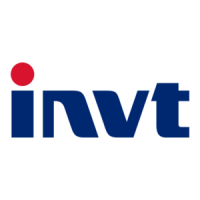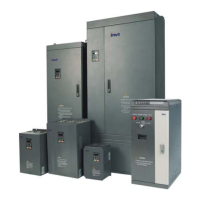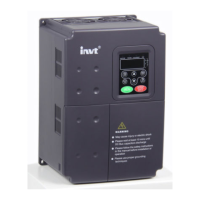What to do if there is over-current during acceleration in INVT CHE100-2R2G-4 DC Drives?
- GginadanielsAug 20, 2025
If the INVT DC Drive displays an over-current error during acceleration, it could be due to several reasons. There might be a short-circuit or ground fault at the inverter output, the load could be too heavy, the acceleration/deceleration time might be too short, the V/F curve might be unsuitable, or there could be a sudden change in load. To resolve this: * Inspect the motor for damage, worn insulation, or cable damage. * Increase the acceleration/deceleration time or select an inverter with a larger capacity. * Check and adjust the V/F curve, and also check the load.



